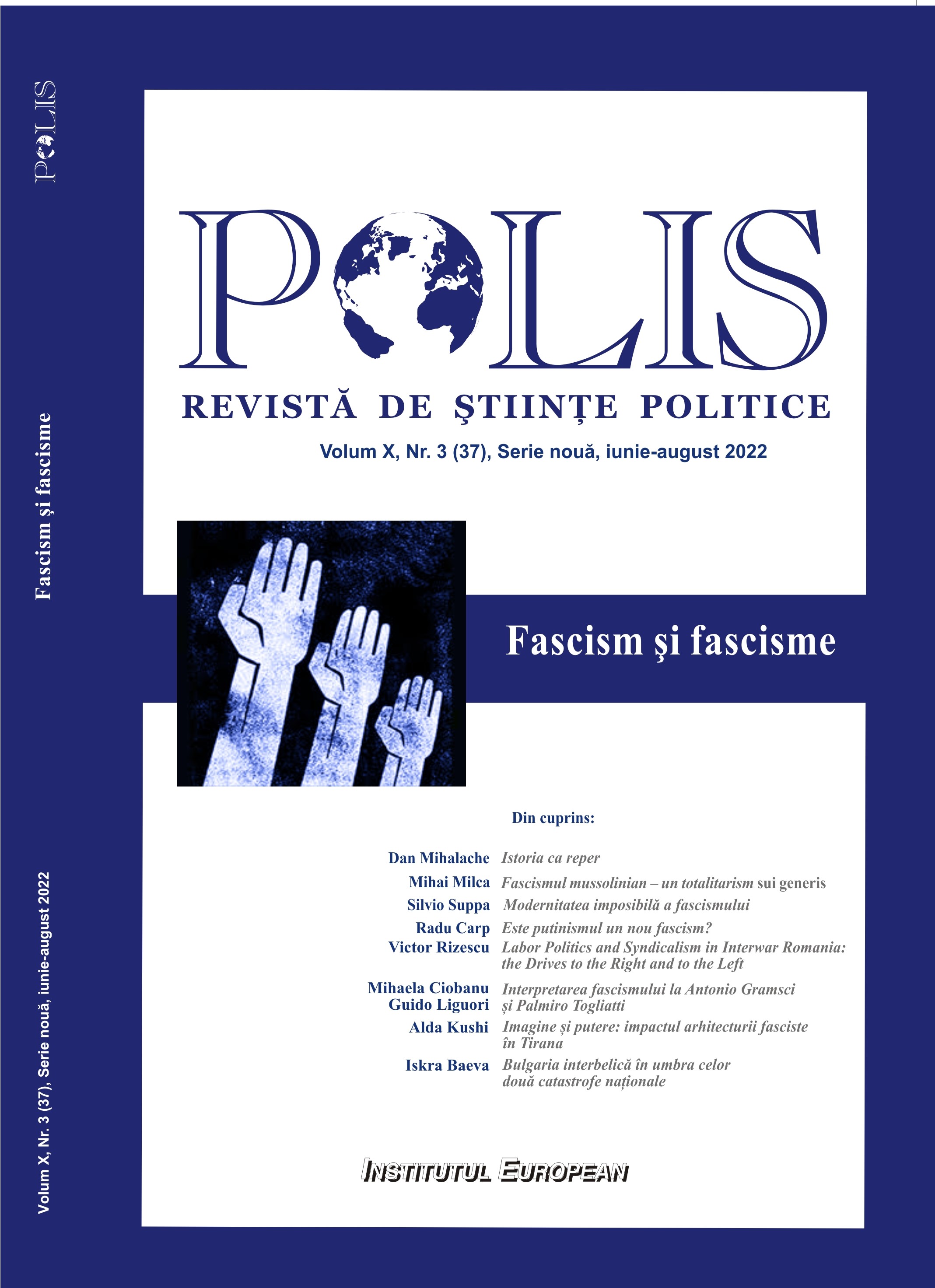Modernitatea imposibilă a fascismului
The impossible modernity of fascism
Author(s): Silvio SuppaSubject(s): Politics / Political Sciences, Politics, Political history, Politics and society, 19th Century, Pre-WW I & WW I (1900 -1919), Interwar Period (1920 - 1939)
Published by: Editura Institutul European
Keywords: Fascism; totalitarianism; modernity; criticism; democracy;
Summary/Abstract: The essay starts from the Italian liberal-monarchical tradition and its lack of democracy (the House of Savoy ruled, also known as the House of Savoy): during that period only the members belonging to the richest classes voted, while women were excluded. In this type of monarchy, social struggles developed in Italy after political unity (1861), and continued until 1919-1920, with the workers’ occupation of factories. From here began the bourgeois reaction, with the violence of Mussolini’s squadrons, who thus obtained the government in 1922 and established fascism, a dictatorial and totalitarian regime, born in violence and enemy of democracy. Violence has become the normal means of threatening opponents with imprisonment, murder, and the police state. Anti-Jewish laws were later adopted, in the style of those promoted by Hitler. A system of this kind cannot be called modern, since without democracy modernity is impossible, even if the most advanced technology is introduced into public life, or propaganda with radio, cinema and sports. The construction of a fascist culture was also part of the scheme of totalitarianism, as it prohibited criticism of the dictatorship and moral and intellectual dialectics. Therefore, fascism, or any totalitarian state, was not and cannot be considered a modern form of state.
Journal: Polis. Journal of Political Science
- Issue Year: X/2022
- Issue No: 3 (37)
- Page Range: 27-42
- Page Count: 12
- Language: Romanian

